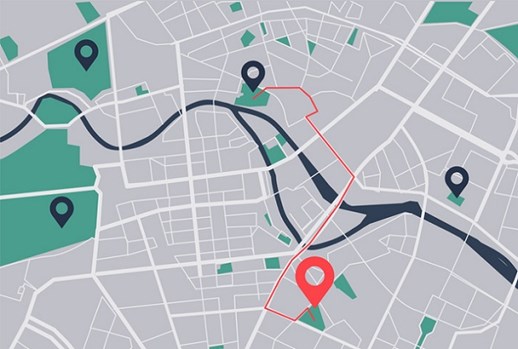Industry voice: The mandate for the use of the identifiers will increase their use and open the door for new initiatives, writes Nick Chapallaz, managing director of GeoPlace

A mandate can be about opportunities as much as obligations, as the public sector can find in the use of Unique Property Reference Numbers (UPRNs) and Unique Street Reference Numbers (USRNs) as its core addressing identifiers.
The requirement was announced by the Government Digital Service (GDS) to align with the Geospatial Commission's 10-year Public Sector Geospatial Agreement, with the Open Standards Board declaring that that UPRNs and USRNs should be used by government in referencing and sharing information about properties and streets. Both identifiers – created by local authorities and managed at a national level by GeoPlace – have also become open and royalty free, available under the Open Government Licence.
It will require an effort by any organisations that are not already using them, but there is a wide body of evidence that they provide a great asset for public authorities for making greater use of their location data to obtain insights and developing better targeted services. And this can apply beyond the public sector as other bodies come to understand the potential.
GeoPlace is shining a light on the opportunities with a new collection of videos and testimonials from high profile organisations outlining the importance of the identifiers.
Among the existing uses for UPRNs is to help local authority social care teams share data on vulnerable householders, without providing personal details, with companies that provide meals on wheels; and to help property developers run analysis on local infrastructure, transport routes and risk on locations before submitting planning applications.
Those for USRNs include their role in calculations by the Department for Transport on funding for local government highway departments; and by utilities to check on how their streetworks might impact local underground heating systems.
NAO support
The National Audit Office is one of the organisations supporting their greater use. It uses UPRNs in spatial data analysis, data cleansing and matching as part of its studies into whether specific public services are providing value for money.
Its senior analyst and mapping lead, Dr Marc Adams, says: “When you’re trying to understand the economy, effectiveness and efficiency of public spending, you often have to think about the ‘where’ of that, where are services located and where are they being delivered? In many cases, location is part of those studies.
“I think UPRNs will increasingly become key to what we do. Where our clients provide us with location and addressing data that has a UPRN, we will immediately have greater confidence that the data is correct and has been checked and verified in a way that makes the analysis we would want to do far more effective.”
GDS backing
Similarly, the Government Digital Service is voicing its support. Terence Eden, senior technical policy adviser at GDS, said: “UPRNs and USRNs link data that exists in different datasets. We have seen that the inclusion of these reference points – in technology or digital or data projects of all sizes and scopes – delivers value that is in excess of any investment needed. That is why we have now mandated their use.
“We look forward to departments coming forward to find out more about capturing that potential for the benefit of their audiences.”
But there is a potential to go further: as they become more widely available they could be used by community and non-profit groups in their collaborations with the public sector.
The Lettings Industry Council (TLIC), an industry group for private rentals sector, wants to use UPRNs to build consistent and common property referencing to support the creation of a ‘property MOT’ as a checklist in meeting minimum standards. One element of this is to check whether a property has a valid energy performance certificate (EPC), and the identifier can be linked to this and to gas and electricity meters as part of the validation.
It also enables local authorities to cross-reference needs for social services with rental properties, to identify landlords who are avoiding their responsibilities for essential repairs, and helps HM Treasury identify those who are not registered for tax.
Dual aims
Theresa Wallace, chair of TLIC, says: “We have two long term aims that are equally as exciting and valuable.
“The first is that all companies involved in lettings use UPRNs as their reference number, bringing down costs overall and helping to support the market as a whole. EPC providers, gas engineers, electrical contractors, CRM systems, deposit schemes, the ombudsman schemes can all use the UPRN as the single reference number to identity a rental property, which means the API keys could link that data, safely, securely and in confidence.”
The second aspiration is that the Government will create an independent portal, similar to the EPC database, that could be accessed by the public sector, landlords and tenants. And in the longer term, there could be scope for the property MOT to replace selective licensing schemes, reduce the costs of improving property and benefit tenants.
TLIC is now campaigning to mandate the use of the UPRN more widely, including ensuring it should be included in all future government tenders and policy relating to residential properties or about them.
The message in all this is clear – that UPRNs and USRNs are major enablers for progress in public services and can contribute to raising standards in the private and third sectors. The mandate by GDS will increase their use, and this opens up new opportunities for organisations in every sector.
It is time to learn the lessons from those who are already exploiting their potential and to think seriously how they could be used to the benefit of your organisation and the community it serves.
For more detail on the examples mentioned above, you can find the case studies and video interviews through the link below.
https://www.geoplace.co.uk/power-of-place
Image from iStock, Shomiz





